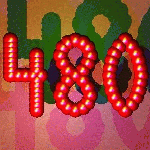
Image by Alex Vlachos
CS480 P5, 1996.
BU
CAS
CS 480
Introduction to Computer Graphics
Spring 1998
 Image by Alex Vlachos CS480 P5, 1996. |
BU
CAS
CS 480 |
sclaroff@cs.bu.edu
Page Created: Oct 22, 1997 Last Modified: Oct 22, 1997 Maintained by: Stan Sclaroff